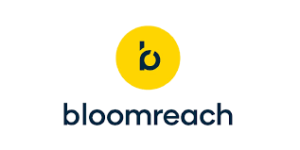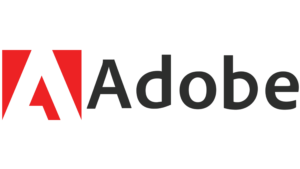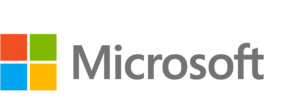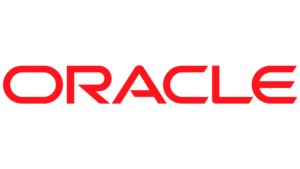Most tech buyers have heard of or currently work with a customer relationship management (CRM) tool, but another customer data management solution is gaining traction because of its holistic approach: the customer data platform (CDP). According to a Markets and Markets study, the customer data platform market hit $2.4 billion in 2020 but is expected to more than quadruple to $10.3 billion by 2025.
Whether you’re looking to supplement your existing customer lifecycle or needing a brand new customer data solution, take a look at some of the best customer data platforms on the market today and why so many enterprise users are moving toward a more comprehensive customer tool.
More on CDPs and digital transformation: Powering Digital Transformation with Customer Data Platforms
Top Customer Data Platform Solutions to Consider
- What is a Customer Data Platform (CDP)?
- CDP vs. DMP: What is the difference?
- Top CDP Features
- Best CDP Solutions on the Market
- Enterprise Network Benefits of Customer Data Platforms
What is a Customer Data Platform (CDP)?
A CDP shares some similarities with the more commonly used CRM. Unlike a CRM, however, customer data platforms focus on the whole customer experience before, during, and after the marketing stage.
CDPs have been designed to act as a centralized hub for all relevant customer data. Connected applications and platforms continue to collect and update customer data, but their connection to the CDP makes it possible to update CDP customer profiles with every new piece of information you learn about them. The centralized approach of a CDP also gives these other software solutions the opportunity to learn from the data that is normally contained in a different, siloed system. In other words, think of CDP customer data as the master copy for the organization’s customer data.
CDPs are typically connected to a wide variety of other customer engagement and management tools, such as analytics platforms, web traffic tools, CRMs, and data management platforms (DMPs). With their wide base of customer data input, customer data platforms often include customer data from the following brand engagements:
- Website and e-commerce site behaviors
- Online ad and email interactions
- Mobile app engagement
- Relevant search queries
- In-store interactions, typically based on purchase data
Tools for protecting your data: Best Data Recovery Software for Restoring Data
CDP vs. DMP: What is the difference?
Customer data platforms and DMPs share many similarities, especially since they’re both focused on collecting, managing, and sometimes providing deeper analytical insights on customer data. However, they differ in the traditional scope of their projects. While a CDP works with and enriches data at all phases of the customer lifecycle and for different use cases, DMPs narrow their focus down to marketing, more specifically, targeted advertising. And while CDPs collect data from all kinds of internal and external sources, DMPs almost exclusively collect third-party data for smart data training.
Although DMPs work best when used in partnership with a CDP, that is not to say they don’t provide additional value to a customer data platform. While a CDP helps the DMP to have improved access to first-party data for more targeted advertising, the DMP helps the CDP by offering deeper customer insights about online engagement. CDPs offer more comprehensive use cases, but the two share a fairly symbiotic relationship.
Learn more about data management on Datamation: Data Management Trends
Top CDP Features
A top-performing customer data platform typically offers users the following features:
- Unified customer database: CDPs, at their foundation, are expected to create a unified customer database where other applications and users can collect a trusted master copy of their customer data.
- Data cleaning and segmentation: The best CDPs not only store data but also manage that data for quality. Think about it this way: the same customer’s information may be collected by three different sources, and due to either user or system error, each of those records may be different. With the help of a CDP, enterprises can create more accurate customer records through record merging and deduplication.
- API connectivity: CDPs work best when they can collect data from and provide data to a variety of sources. Because of their goal of connectivity, it’s important for customer data platforms to offer native integrations and API options so users can connect all of their relevant enterprise apps to the system.
- Automation: Beyond automated updates to customer profiles, the best CDPs offer other event and workflow automation, such as automated grouping and buyer’s journey updates.
- Data reporting: Although not all CDPs offer in-depth reporting, many tools either offer native or third-party data reporting and data visualization features.
Data visualization tools to supplement your CDP: Best Data Visualization Tools & Software
Best CDP Solutions on the Market
Tealium 
Tealium AudienceStream CDP is a favorite on the CDP market for its comprehensive data management features, its extensive integration marketplace, and its data quality tools. Tealium is also one of the few tools on the CDP market that natively offers data governance features, with several data privacy certifications under their belt.
Features
- Patented visitor stitching technology for customer profile building and cleaning
- Over 1300 native integrations available, including with most email, marketing automation, online advertising, social, and CRM platforms
- Customizable badges for customer behavior and trend management
- Consent management and regulatory compliance features
- Predictive machine learning and orchestration
Top Pro: Customers say that Tealium offers strong data sanitization without a lot of manual work; many users also complement their robust integration capabilities.
Top Con: Some users say that Tealium is complicated to use; the dashboards are useful but lack the detail and reports that some people want.
Treasure Data CDP
Treasure Data CDP emphasizes a comprehensive approach to the customer lifecycle by clearly delineating their different features for marketing, sales, and customer service. Customers have the ability to scale up and down in each of those verticals, with the added bonus that Treasure Data offers unlimited storage space to its users.
Beyond their core offerings, Treasure Data also offers Treasure Boxes, or templated code, components, visualizations, and applications that can be applied to a variety of customer metrics tracking initiatives.
Features
- Prebuilt Treasure Boxes offered for simple ML operations
- Ready-to-use and frequently maintained connectors for integrations
- Batch and streaming ingestion for multi-channel data management
- Schema-flexible data ingestion and built-in query engines for data quality management
- Workflow editor and user-friendly audience studio available
Top Pro: Unlimited storage space is available to users, advertised for 10s or 100s of billions of records.
Top Con: Some customers have explained that there is a lack of change management and that they’ve experienced bugs due to multiple user edits.
Salesforce Interaction Studio
Salesforce is typically thought of as a CRM, but with its robust data lifecycle management and AI/ML features in the portfolio, the Salesforce Interaction Studio offers a full-fledged CDP with in-depth customer insights and cross-channel metrics made available. Salesforce offers a more robust analytics backend natively than many other CDPs as well as the ability to easily manage communication, workflows, campaigns, and reporting directly on the platform.
Features
- Data can be sourced externally through connectors, ETL, API, and JavaScript integrations
- Automatic cataloguing for data and metadata to power machine-learning recommendations
- Real-time data segmentation and AI application
- A/B test algorithms available on the web, in-app, and on other channels
- Data warehousing and data science workbench available for additional data management needs
Top Pro: This Salesforce tool offers strong qualitative data analysis to users, making campaign adjustments and behavioral data measurement easier.
Top Con: The UI is not considered very intuitive, particularly for reporting.
Bloomreach Engagement
Bloomreach Engagement has recently rebranded themselves as something more than a CDP: a customer data and experience platform (CDXP). With this emphasis on customer experience management as well, Bloomreach offers marketing automation and conversion rate optimization features, such as email, SMS marketing, in-app messages, and retargeting as native features.
Features
- Online and offline data tracking for single customer view
- Real-time dynamic segments for customer behavior tracking
- AI-powered personalized product recommendations for first-time users
- 13 out of the box recommendation templates and DIY templates available
- Ready-made prediction templates to predict customer behavior
Top Pro: The Optimum Email Time automation feature has improved customer message open rates for many users.
Top Con: Some users have concerns about security and regulatory compliance on the tool, specifically in areas like encryption and GDPR adherence.
Adobe Experience Platform
Adobe is typically thought of as a creative cloud suite of tools, but with the Adobe Experience Platform and other Experience Cloud products, Adobe is capable of streaming in data, preparing it for deeper analysis, and activating new data knowledge across an enterprise portfolio. Adobe’s data preparation in particular is highly praised, with data governance, data privacy, and standardized schemas built into the data cleansing process. Some users who aren’t familiar with the Adobe ecosystem may have trouble getting started, but it’s important to note that this tool works across both Adobe and non-Adobe datasets and platforms.
Features
- Standardized XDMs and data validation
- Dynamic identity graphs for cross-device profile management
- SQL query analysis across multiple channels and platforms
- Central omnichannel data source for machine learning model efficiency
- Data visualization with built-in BI integrations
Top Pro: Adobe offers very granular customization for settings and permissions in particular.
Top Con: Some users, especially users who were not previously familiar with Adobe tools, feel that this product has a steep learning curve with limited documentation and tutorials available.
Dynamics 365 Customer Insights
Dynamics 365 Customer Insights is a Microsoft CDP that offers AI-powered insights and granular customer analytics on a user-friendly dashboard. This platform particularly excels in its AI offerings, with out-of-the-box AI, self-service AI, and customizable AI features offered to platform users. And while many other platforms suffer from an outdated user interface or limited data visualizations, Customer Insights offers customizable data visualizations that are easy to interpret.
Features
- Out of the box and custom reporting available
- Prebuilt and custom AI models for predictive insights
- Cookie-less consent rules feature
- Multiple-condition funnel reports for customer journey optimization
- Built-in data governance tools for regulations like the General Data Protection Regulation (GDPR) and the California Consumer Privacy Act (CCPA).
Top Pro: More robust reporting and data visualization features than most other tools in the CDP market.
Top Con: Dynamics 365 Customer Insights does not offer as many external integrations and connectors as some of the other tools in this market.
Oracle Unity Customer Data Platform
The Oracle Unity Customer Data Platform is a tool in the Oracle CX Marketing suite that focuses on CDP with machine learning-powered insights and recommendations. Smart segmentation and in-depth behavioral analysis is one of this platform’s strengths, with features like behavioral scoring and prebuilt behavioral segment templates. Oracle is known globally for its database and data management tools; this tool, in combination with other Oracle data tools, helps enterprises feel confident in the quality of their collected customer data.
Features
- Built-in identity resolution available in single-customer view
- Data cleansing and preparation for customer data modeling
- Industry-specific schemas for customizable campaigns and workflows
- Over 50 prebuilt intelligent attributes and customizable attributes available for customer profile enrichment
- Smart segmentation with behavioral scoring and prebuilt behavioral segments
Top Pro: Connection to other Oracle database and data management tools makes this one of the strongest data quality options in the market, specifically with other Oracle CX tools.
Top Con: Some customers have explained that this Oracle product requires a long implementation/setup process with limited customer support available.
SAP Customer Data Platform
The SAP Customer Data Platform is another tool on the CDP market that offers robust data visualizations and other dashboard features for easier understanding. Typically deployed through the cloud as software-as-a-service (SaaS), users can expect real-time updates to their customer profiles and all of the data privacy and governance strengths that now often come with a cloud-based platform.
Features
- SAP Master Data Integration service available to connect back-office and front-office data
- Engagement systems based on data privacy and regulatory inputs
- Regular calculation of attributes for segmentation and audience management
- Adaptive business hierarchies and departmental ownership visibility for a larger enterprise
- No-code and low-code features for a user-friendly interface
Top Pro: SAP offers several native features, but also offers easy integrations via APIs and connectors, thus limiting necessary customizations.
Top Con: This platform caches contact information semi-regularly, particularly from social media platforms, so some contact information is not updated in a timely fashion.
Learn more about low-code in the enterprise network: Using Low-code to Deliver Network Automation
Enterprise Network Benefits of Customer Data Platforms
Breaking down data silos
Especially in a larger enterprise, every department across marketing, sales, finance, and others has a unique frame of knowledge about the customer. While that specialized knowledge is helpful, separate customer profiles across siloed departments makes it difficult for any employee to get the full picture of who the customer is, what they want, and how they currently engage with your brand.
With a customer data platform, customer data silos are immediately broken down. Anyone who has access to the CDP’s unified customer database can immediately see data from any other enterprise system that has been connected to the platform. Having a master copy of customer data not only ensures accuracy and appropriate engagement with the customer but also allows different departments to understand all of the data and craft customer-facing projects with more comprehensive expertise on the customer experience.
More on data democratization: Data Democratization: Key Strategies for Your Business
Data quality management
Many customer data platforms offer embedded data quality features, such as deduplication, data cleansing, and data merging, and some of the more advanced tools offer data governance features to meet regulatory requirements. Simply by the fact that you are merging customer profiles across your enterprise portfolio into one place, you’ll eventually be able to see and correct inconsistencies in your customer data profiles.
In-depth customer data
CDPs don’t just offer the name and contact information of a prospect or customer. With the combined knowledge of your entire customer data portfolio, CDPs can share information like the customer’s last engagement with your website, how much they’ve spent in certain product categories over the last year, and even their relevant geo-location tags. While not all of this data will be useful to all enterprise users, this in-depth customer knowledge helps you target campaigns and create groups based on specific customer metrics.
Optimized trends reporting
Although not every CDP offers advanced analytics and reporting capabilities natively, their integrative design and their detailed customer information makes trends and business intelligence reporting more granular and accurate. CDPs typically include data across demographic, transactional, behavioral, and channel-based categories, so when users rely on CDPs for reporting data, they can make more holistic predictions about future milestones and goals for the business.
Knowledge base for customer programs
In-depth customer knowledge helps the customer too. When marketers, salespeople, and executives alike know more about their customers’ wants and needs, they begin creating products and services that serve their buyers better.
Although customer data platforms focus almost exclusively on customers and their behavior, these metrics are useful across the board. Knowing your customer, while having the data and action items to back that knowledge up, offers enterprises new opportunities to increase customer engagement alongside their bottom line, making them both a profitable and a preferred seller on the market.
Find the right solution for analyzing your customer data: Best Data Analytics Tools & Software










